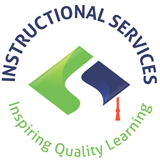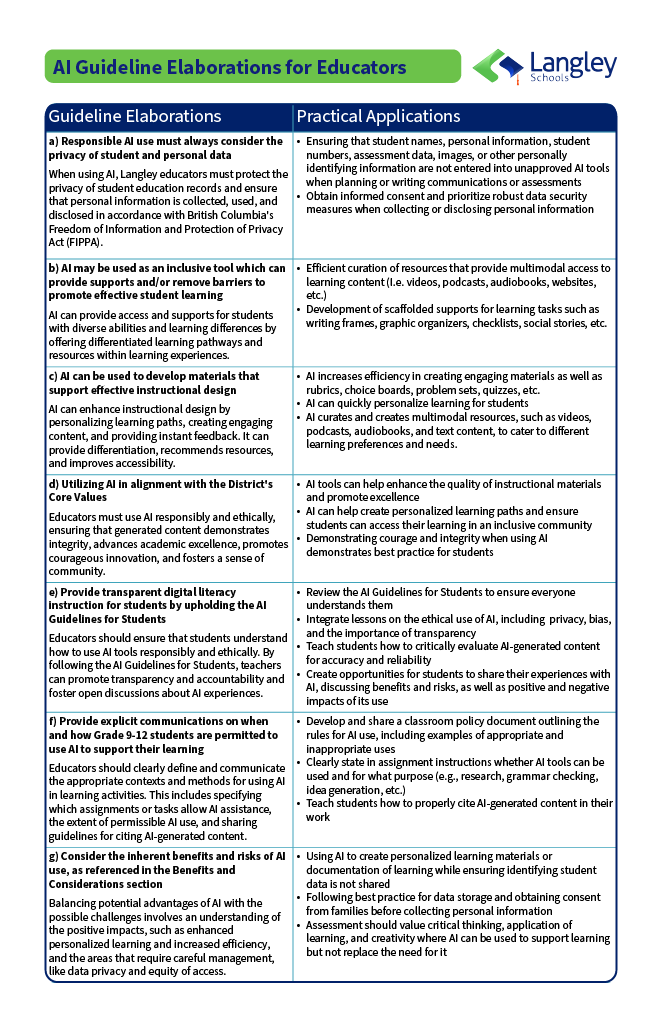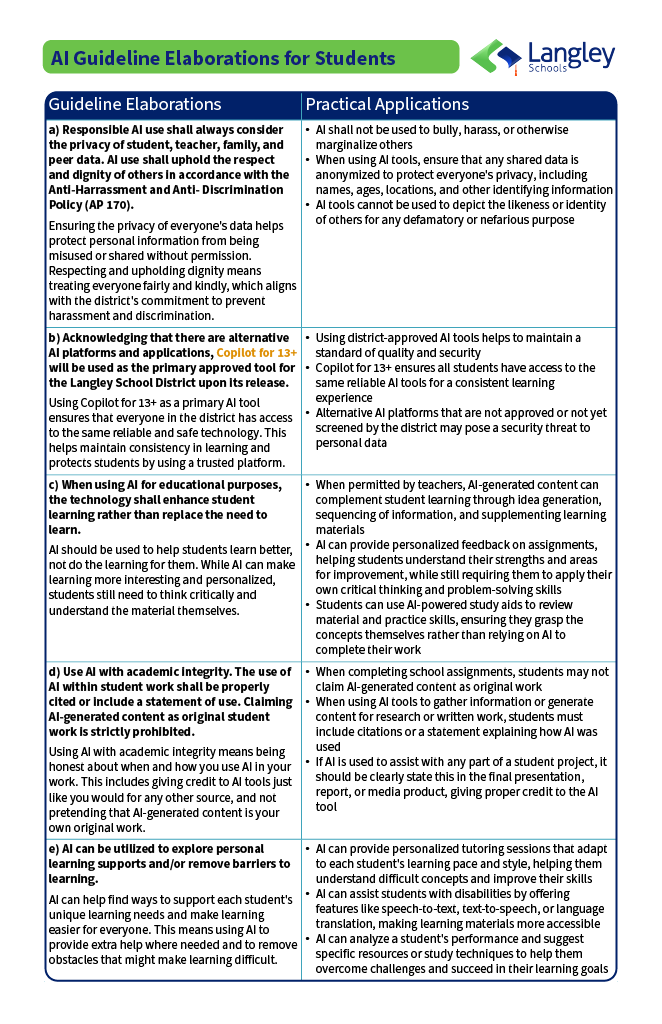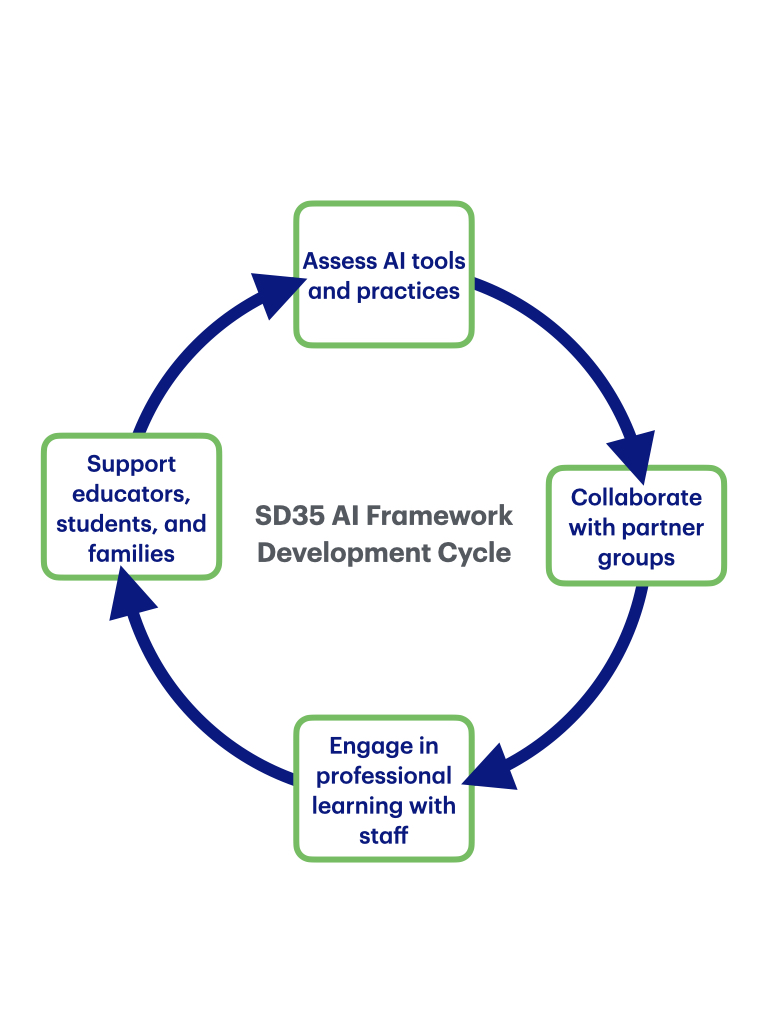SD35 AI Guidelines
Use of Artificial Intelligence in Langley Schools
Langley’s Continuous Improvement Plan highlights the importance of equity for all students. Artificial Intelligence (AI) offers the opportunity to create personalized learning experiences necessary for the success of all students. Langley Schools are dedicated to using AI ethically and responsibly to improve students’ academic experience, inclusion and social well-being. When AI is used to enhance, rather than replace, the educational process, it can also lead to greater job satisfaction for educators. As AI technology evolves, this website’s content will remain flexible and updated to reflect these changes.
What is Generative AI?
Generative AI (GenAI) tools use artificial intelligence to generate content like text, images, audio, video, and code based on the input or prompts provided by the user. When given a prompt, the AI model provides a response that may include words, images or other medium based on its training data and the context, resulting in an original output each time. For an overview of the benefits and considerations of Generative AI Use, please see the Benefits and Considerations section of this site.
Guiding Values
In Langley Schools, our core values of excellence, courage, integrity,
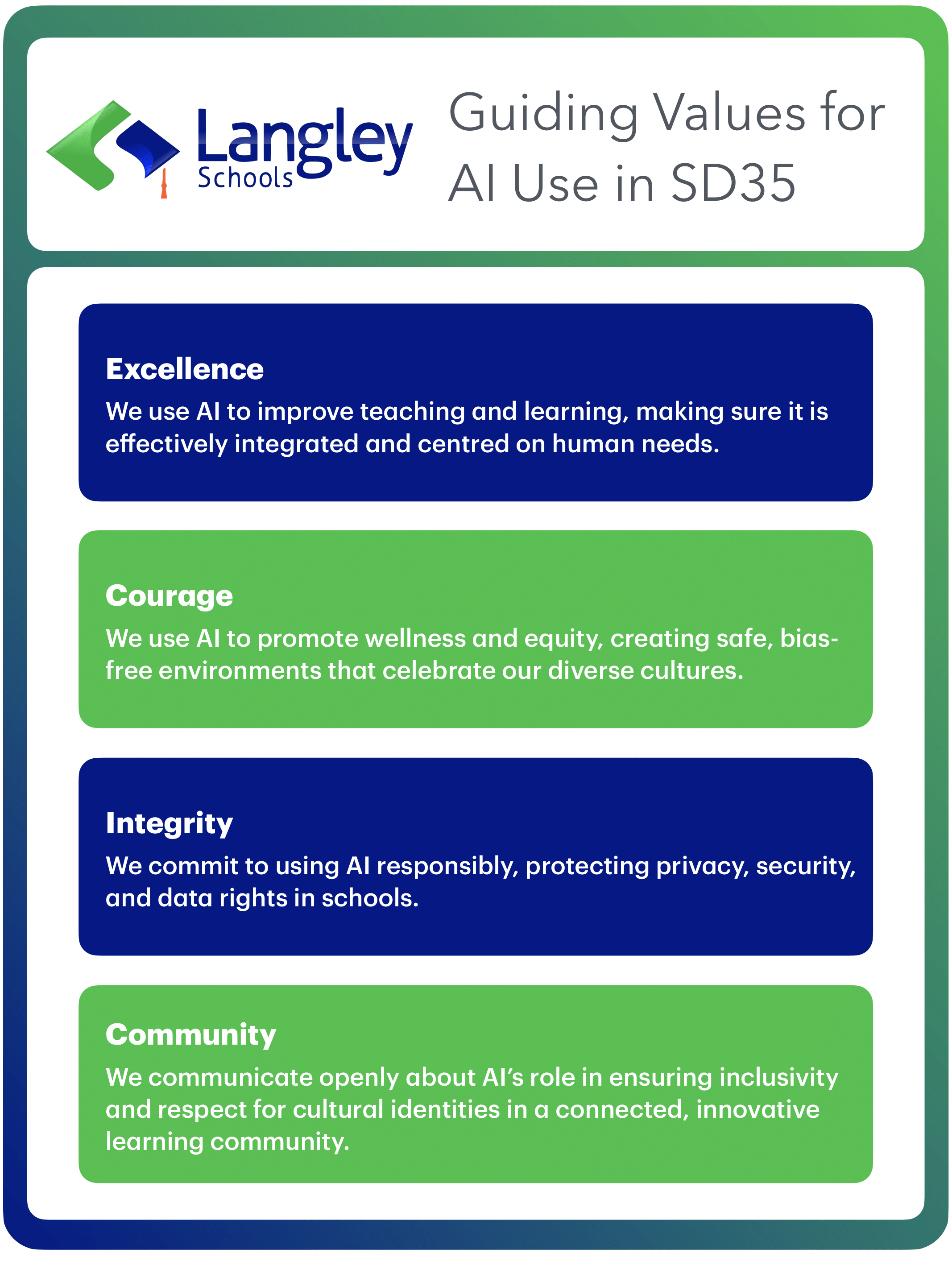 and community guide the integration of AI, ensuring that technology enhances educational quality, fosters innovation, upholds ethical standards, promotes equity, and strengthens our collective identity.
and community guide the integration of AI, ensuring that technology enhances educational quality, fosters innovation, upholds ethical standards, promotes equity, and strengthens our collective identity.We thank you for taking the initiative to share Indigenous teachings with your students. However, the District and Aboriginal Program request that you do not use AI tools, such as Copilot, to create Indigenous learning opportunities for students. This is because AI does not follow Indigenous Protocols. It cannot ask permission, share where teachings come from, source only from authentic resources, or recreate embodied knowledge. Using AI to create Indigenous lessons is cultural appropriation. Instead, please use authentic and vetted resources that are readily available. You can find some examples of these on the Langley School District’s Aboriginal Program website.
Benefits and Considerations of AI Use in Education
Below are some general benefits and considerations for educational use cases of AI in SD35. These lists are not intended to be exhaustive, but rather, to serve as examples that illustrate both the benefits of AI and the importance of using it with caution.
Possible Benefits of AI Use:
- Personalized learning: Tailoring learning activities or lessons to individual student needs and learning styles, including but not limited to translation and appropriately-levelled texts
- Inclusive instruction: Emphasizes Universal Design for Learning to allow for multimodal access to learning and demonstration of understanding
- Assignment creation: Development of assignment criteria, graphic organizers, study guides, and problem sets
- Feedback and editing: Creation of feedback rubrics, suggestions for editing, and refining written feedback
- Unit and lesson planning: Scope & sequence support, lesson activity brainstorming, curricular skill development ideas
- Curating resources for student research: Compilation of resources on a particular learning topic that students could explore, including websites, videos, podcasts, articles, etc.
- Communication efficiency: Quickly authoring field trip forms or classroom updates for families
Idea generation: Support in brainstorming new ideas for written work or large projects
Considerations of AI Use:
- Data privacy and security: Several AI tools collect user prompts and responses in order to further improve the tool, and data management practices of each tool are constantly evolving. For security purposes and FOIPPA compliance, your SD35 Copilot account must be logged in and used whenever working with private or identifying information (i.e. Names, schools, etc.).
- Inaccurate outputs: Generative AI outputs are not always accurate and can be hard to spot. AI hallucinates information because it generates responses based on patterns in its training data rather than true understanding, sometimes filling gaps with plausible but incorrect details that users need to look out for. All AI outputs need to be interpreted through a critical lens.
- Equity of access: Not all students have equal access to technology or the internet. AI should be implemented in a way that enhances equitable access to learning for all students.
- Ethical implications: AI language models are based on information that is readily available in our society, which can reflect or amplify current or historical social biases. Review all AI-generated content with a critical lens and correct problematic content as necessary.
- Communication for student use of AI: All educators should make clear communications about when AI is allowed or not allowed to be used in assigned work.
- Student overreliance on AI: Students can easily overrely on AI, both when allowed or not allowed for use in an assignment. Educators should build the ability to recognize the intersection of student learning and AI use in order to maximize the human elements of the learning experience.
- Standardized expectations of practice: Student use of AI will follow district guidelines for Digital Literacy. Appropriate use of AI is addressed through district guidelines as outlined in Information Technology Appropriate Use (AP140, Appendix A).
AI Guidelines for Langley Schools
In Langley Schools, we will be using Microsoft Copilot as the primary approved tool for Generative AI. Copilot is currently approved for staff use only and the age 13+ version of Copilot will be approved for Grade 9-12 students upon its release. Additional approved AI tools can be found on the Approved AI Tools List.
All use of technology in the Langley School District, including the use of AI, shall follow the guidelines listed within the Information Technology – Appropriate Use policy (AP 140, Appendix A) and the Langley Schools Student Code of Conduct (AP 350).
AI Guidelines for All Employees:
- Responsible AI use shall always consider the privacy of personal data, in accordance with the Privacy Management Program.
- AI can be used as an inclusive tool which can provide supports and/or remove barriers.
- AI can be used to develop materials that support best practices in the district.
- AI shall be utilized in alignment with the District’s Core Values.
- When working with students or their data, staff will demonstrate an understanding and application of the AI Guidelines for Students.
- Consider the inherent benefits and risks of AI use, as referenced in the Benefits and Considerations section.
AI Guidelines for Educators
- Responsible AI use shall always consider the privacy of student and personal data, in accordance with the Privacy Management Program.
- AI can be used as an inclusive tool which can provide supports and/or remove barriers for student learning.
- AI can be used to develop materials that support effective instructional design.
- AI shall be utilized in alignment with the District’s Core Values.
- Provide transparent digital literacy instruction for students by upholding the AI Guidelines for Students.
- Provide explicit communications on when and how students are permitted to use AI to support their learning.
- Consider the inherent benefits and risks of AI use, as referenced in the Benefits and Considerations section.
AI Guidelines for Students
- Responsible AI use shall always consider the privacy of student, teacher, family, and peer data. AI use shall uphold the respect and dignity of others in accordance with the Anti-Harrassment and Anti-Discrimination Policy (AP 170).
- Acknowledging that there are alternative AI platforms and applications, Copilot for 13+ will be used as the approved tool for the Langley School District upon its release.
- When using AI for educational purposes, the technology shall enhance student learning rather than replace the need to learn.
- Use AI with academic integrity. The use of AI within student work shall be properly cited or include a statement of use. Claiming AI-generated content as original student work is strictly prohibited.
- AI can be utilized to explore personal learning supports and/or remove barriers to learning.
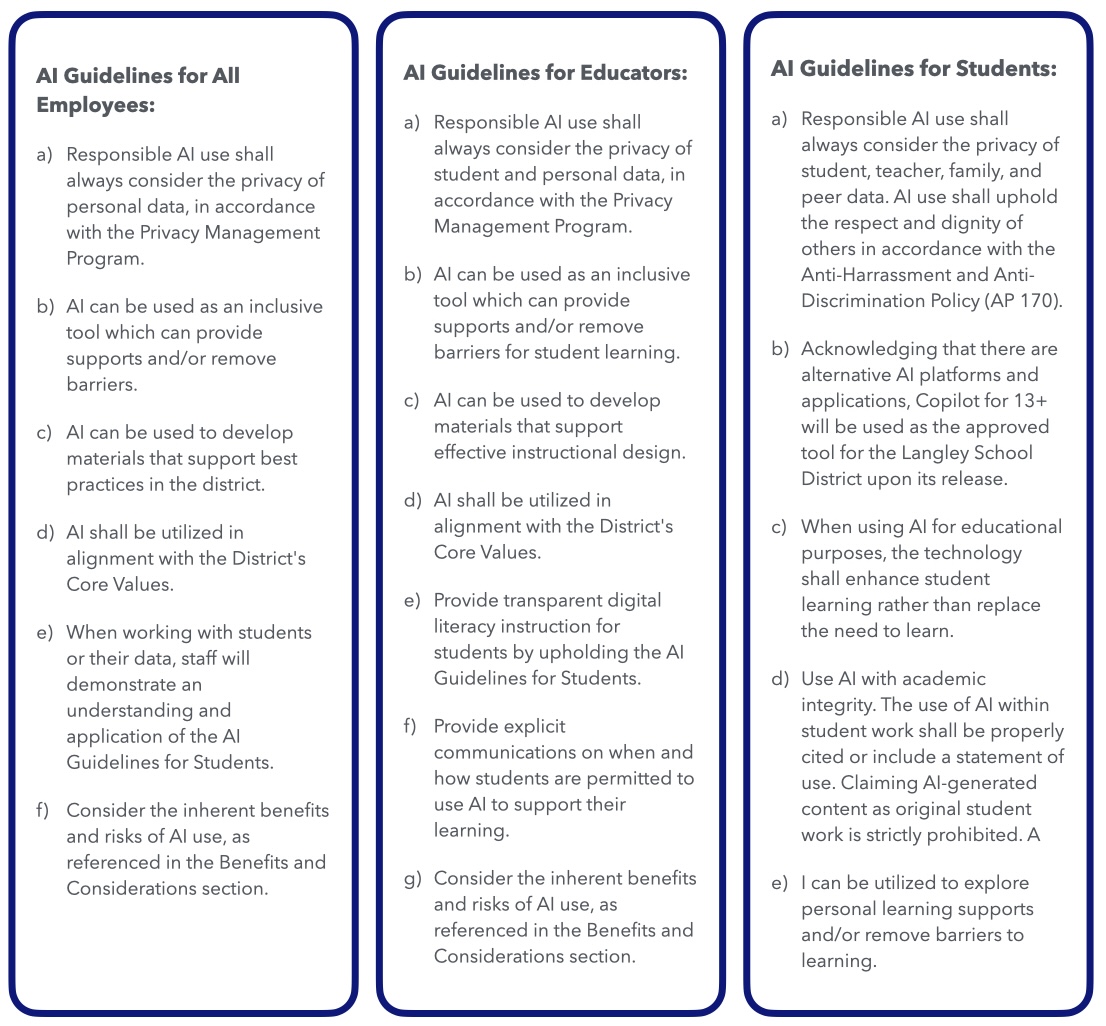
AI Guideline Elaborations
The tables below break down the AI Guidelines for each community group into more specific examples of how they might be employed in practice.
For all employees, the elaborations would pertain to their various working environments. For educators, the elaborations would relate to their professional practice including planning and teaching. And finally, for students, the elaborations would detail how the guidelines apply to their learning and educational experiences.
AI Guideline Elaborations for All Employees
AI Guideline Elaborations for All Educators
AI Guideline Elaborations for Students
Working Together
Collaborative Development of SD35 AI Frameworks
This section outlines the key steps SD35 is taking to ensure responsible and effective AI implementation across our schools. Due to the rapidly changing availability of AI tools and innovations, this framework is flexible and will be revisited and adjusted often.
Partner Groups
There have been several representatives from multiple partner groups engaged in the creation and refinement of the district’s initial AI frameworks and guiding documents. These partner groups have included SBO staff, IT staff, administrators, and teachers, including representation from the LTA executive. Together, this AI steering committee has also invited feedback from additional partner groups including school Tech Learning Ambassadors and Teacher Librarians.
AI Steering Committee Goals
The goal of the AI steering committee is to promote the responsible incorporation of AI literacy into all grade levels and curriculum areas as a tool to support learning. The British Columbia Ministry of Education AI guidance documents served as a foundational starting point for the committee in the development of the district’s policies and guidelines.
Looking Ahead
As AI technologies continue to evolve, grow, and even disrupt society, the district recognizes the need to be responsive to these changes. The collaborative relationship with partner groups and refinement of SD35 AI policies and implementation will be ongoing in order to navigate these shifts and the impact on the education system.
Additional Resources
Additional AI resources and links to approved AI tools can be found on the Instructional Services Digital Literacy website.
